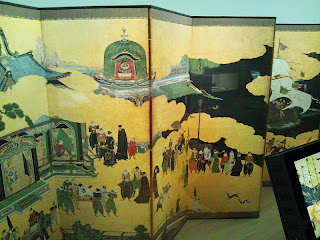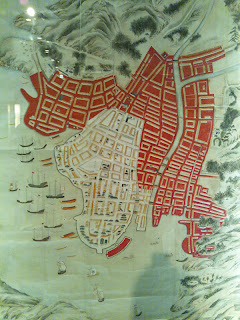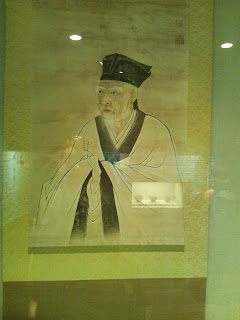While I won't go into all the gory details he shared (though sadly he wasn't trying to be grisly, it really was just that bad after the impact) There are a few things I did want to share for his account. He is the sole survivor of his family (their house was 600 meters from the hypocenter). One of his younger brothers (age 11) died in the explosion (though it was from the pressure wave, not the fire). His little sister (age 5) died the next day from radiation poisoning, and while they had been in the same cemetery that night with other survivors seeking a place to just sit he never saw her before she passed away. His other brother (age 13) died a few weeks later from the damage done, both in infection (because there was nothing to use for sterilization because the hospitals were all wiped out, sadly this was mostly according to the US's plan) and radiation. The saddest part of this story though was the death of his mother. He described the scene in some detail, she was burned to death, but at the end he added a few words that broke my heart, he said, "I have not cried once since that day." Many people also died at the rivers desperately trying to get some water without knowing it was contaminated. I truly believe the Japanese are among a small number of people at points in history who can truly claim that what they saw was "hell on earth".
The atomic bomb detonated 1 km over Nagasaki on August 9th at 11:02am. Ground Zero was a few kilometers from the center of downtown, which was the original target. While not in place at the time, the Geneva Convention would later be amended to make such actions criminal. Since Nagasaki over 2,000 nuclear weapons have been tested in the atmosphere, in the ocean, and underground. The US accounts for over half of these tests, with nearly 1,000 occurring worldwide before underground tests became common practice, though this is apparently not presently true with China. I can not help but think that environmental changes and the rise in cancer are somehow directly related to these constant tests.
After the seminar we headed out to Nagasaki Peace Park, it was a rainy day and I was glad that I had photographed the park on a better day, please revisit my post about Nagasaki Peace Park if you would like to review the sculptures and monuments. One interesting fact that we heard during the tour from our guide was that there was a girl who was somewhere around 130 meters from the hypocenter when the bomb exploded, up on a hill, she was throw by the initial blast onto the other side of the mountain and miraculously survived, and is still alive today, though she does not live in Nagasaki, and is somewhat reclusive. All other information is in my previous post.
After our tour through the Peace Park we were allowed to wander the Atomic Bomb Museum. While I found it interesting I was a little disappointed that most of the exhibits showed the effects of a nuclear attack on various materials. One item that caught my attention (though for some reason I did not think to photograph it) was a wall clock that was mostly destroyed, but still shows the time of the attack. What was made this item of interest to me was that it was taken from Sakamoto Machi, I live in Sakamoto Machi. In truth my home is about 800 meters from ground zero, and I can imagine the view from this hill the day after the attack.
Some of the wreckage after the blast, twisted steel and stone rubble.
The area of affect. The orange ring is showing the expanses of the explosion, the blue circle is giving the rough area it covered. It honestly would have been worse if not for all the mountains here.
These are survivor stories, I hope you will take the time to read them.
The bomb
If you look closely you can see the shadow from a tree was "flashed" into the wood.
Various things exposed to the blast, see if you can figure out what they use to be.
These paintings depict the aftermath in a less gruesome way.
Below are some works of art that I love. These pictures are made of little paper cranes. If you are unfamiliar with the legend, if you make 1,000 paper cranes you get a wish, these works of art are essentially filled with the prayers and wishes of the Japanese people for peace and a world without nuclear weapons.
This is the Kanji for "Heiwa" it means "Peace"
After the atomic bomb museum our day was lightened up a little with a trip to the Nagasaki Museum of Culture. While I do not have much to say about the museum in general there were some interesting items that I saw, but I will allow you to look at the things I saw and get a feel for what Nagasaki was like during the period of isolation.
See what they use to think Japan looked like?
Map of Nagasaki, fairly certain the red areas are where there were foreigners
Gate Pass
The Chinese Temple in Nagasaki
Same deity
Chinese living quarter
This huge pot was for cooking rice
Leave it to me to find the swords
Below are a collection of Christian (Catholic) works from around the period it was banned
An early book on botany
There was more to see in this Museum, but for the day we were limited to the second floor. I plan to go back again when I have more time. This concludes my Saturday.





































































No comments:
Post a Comment